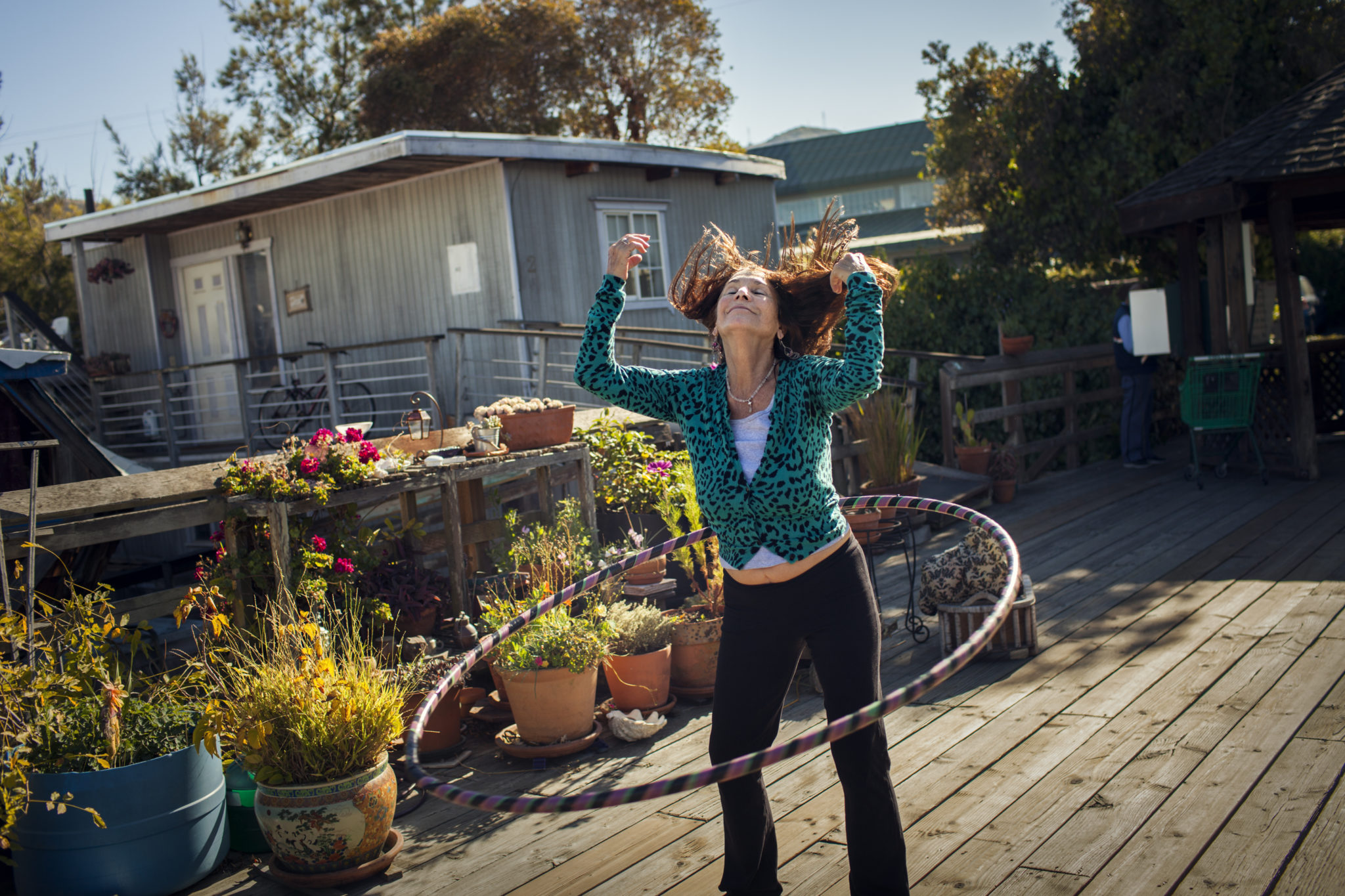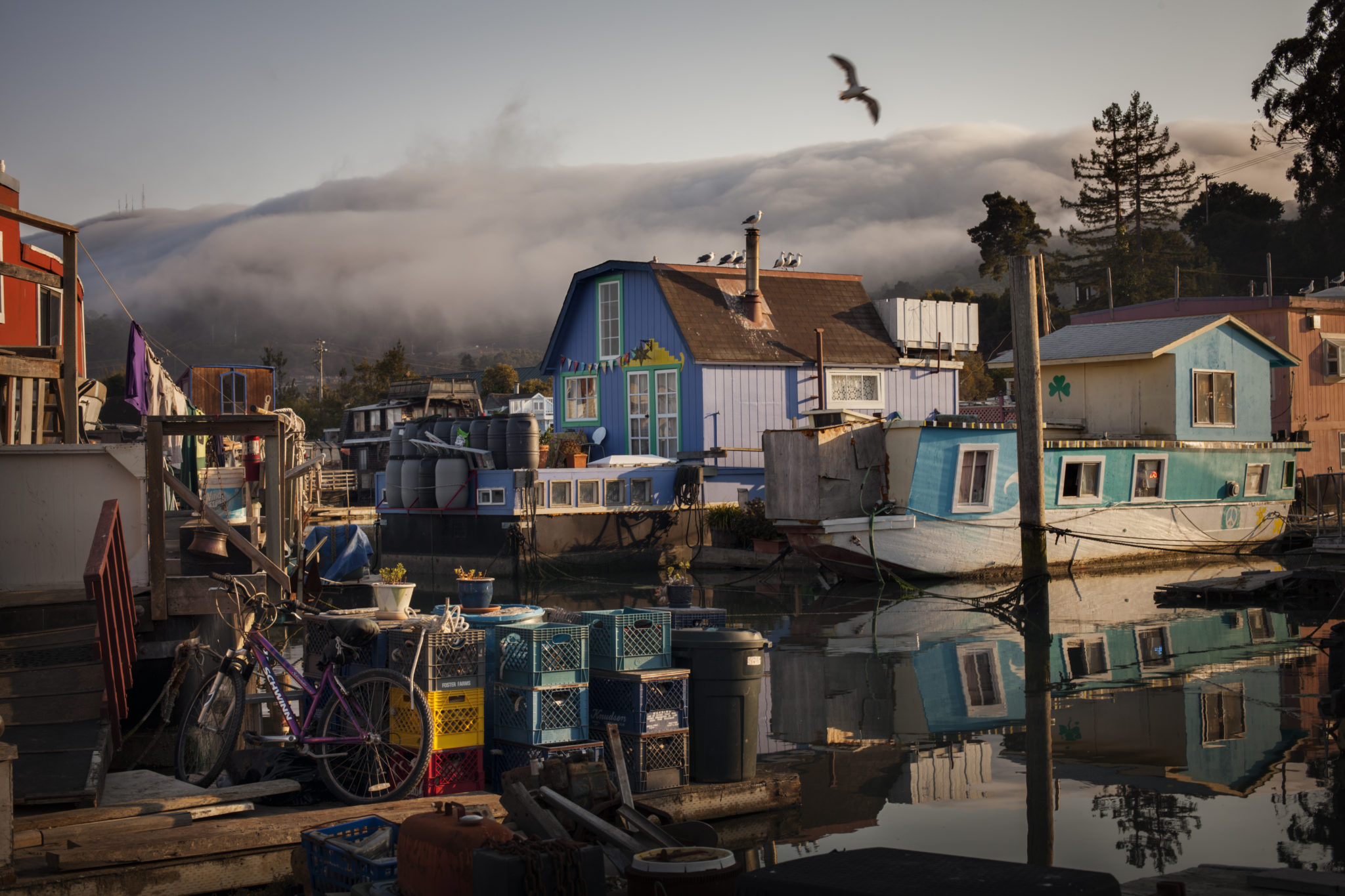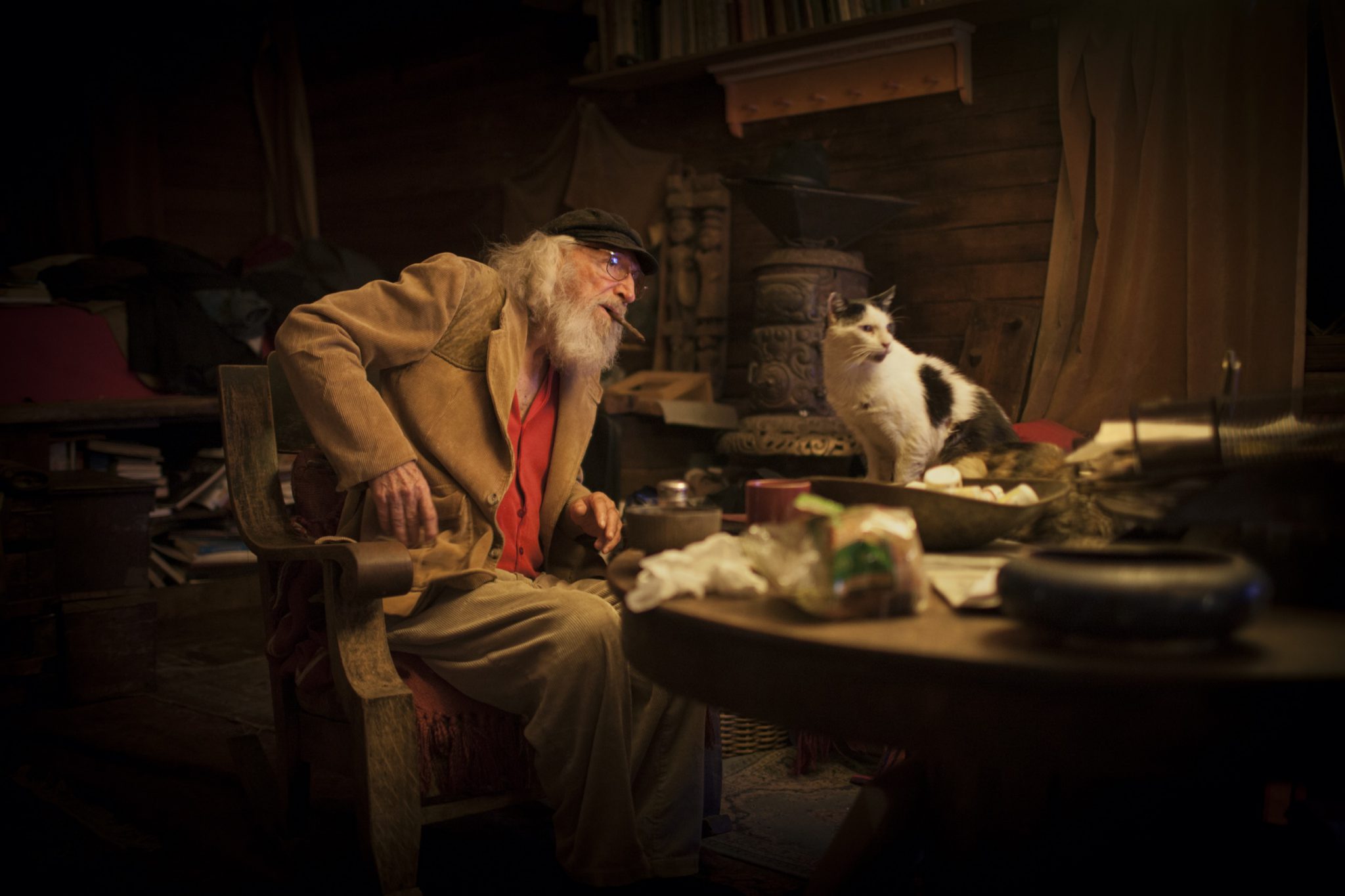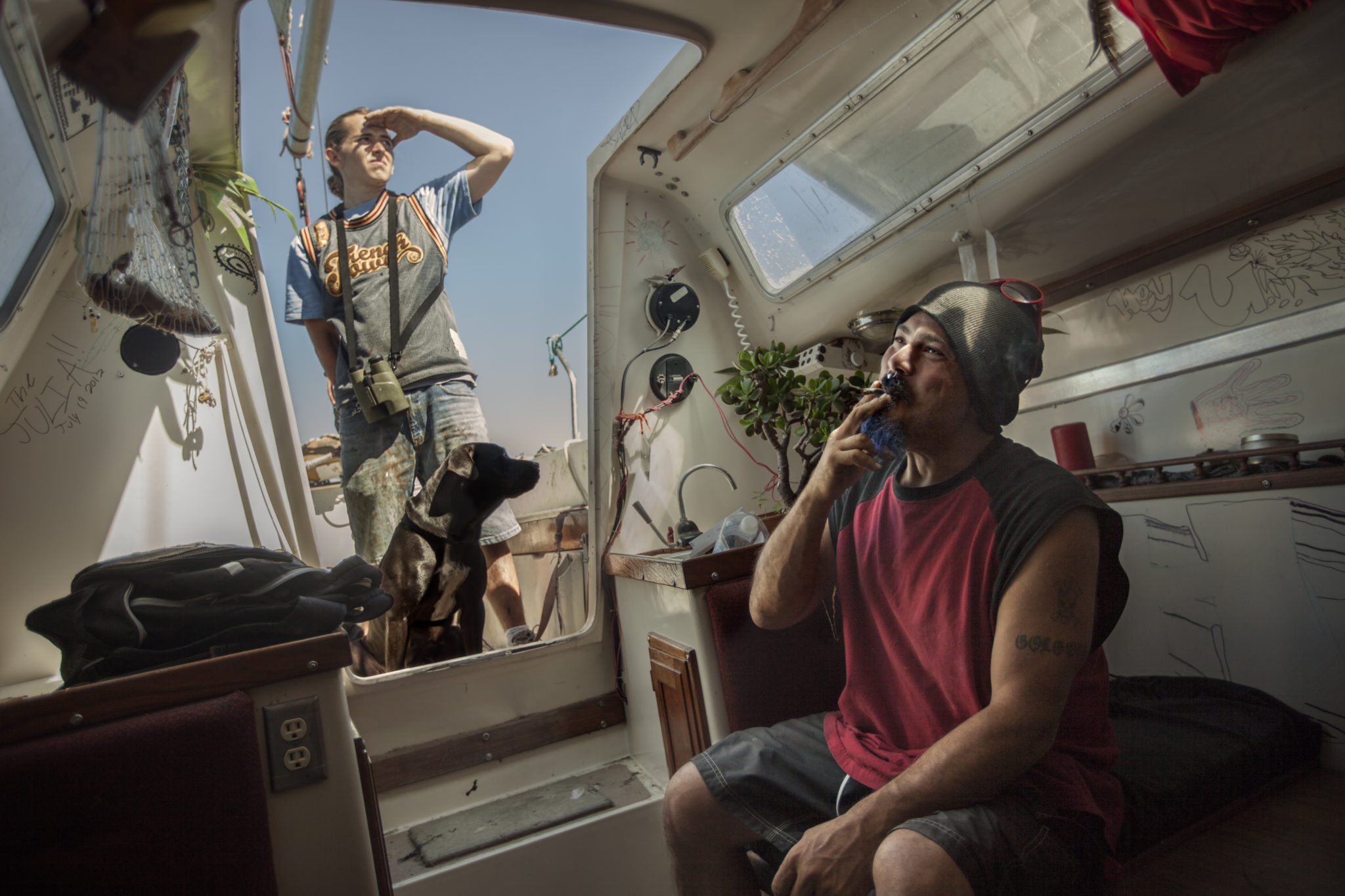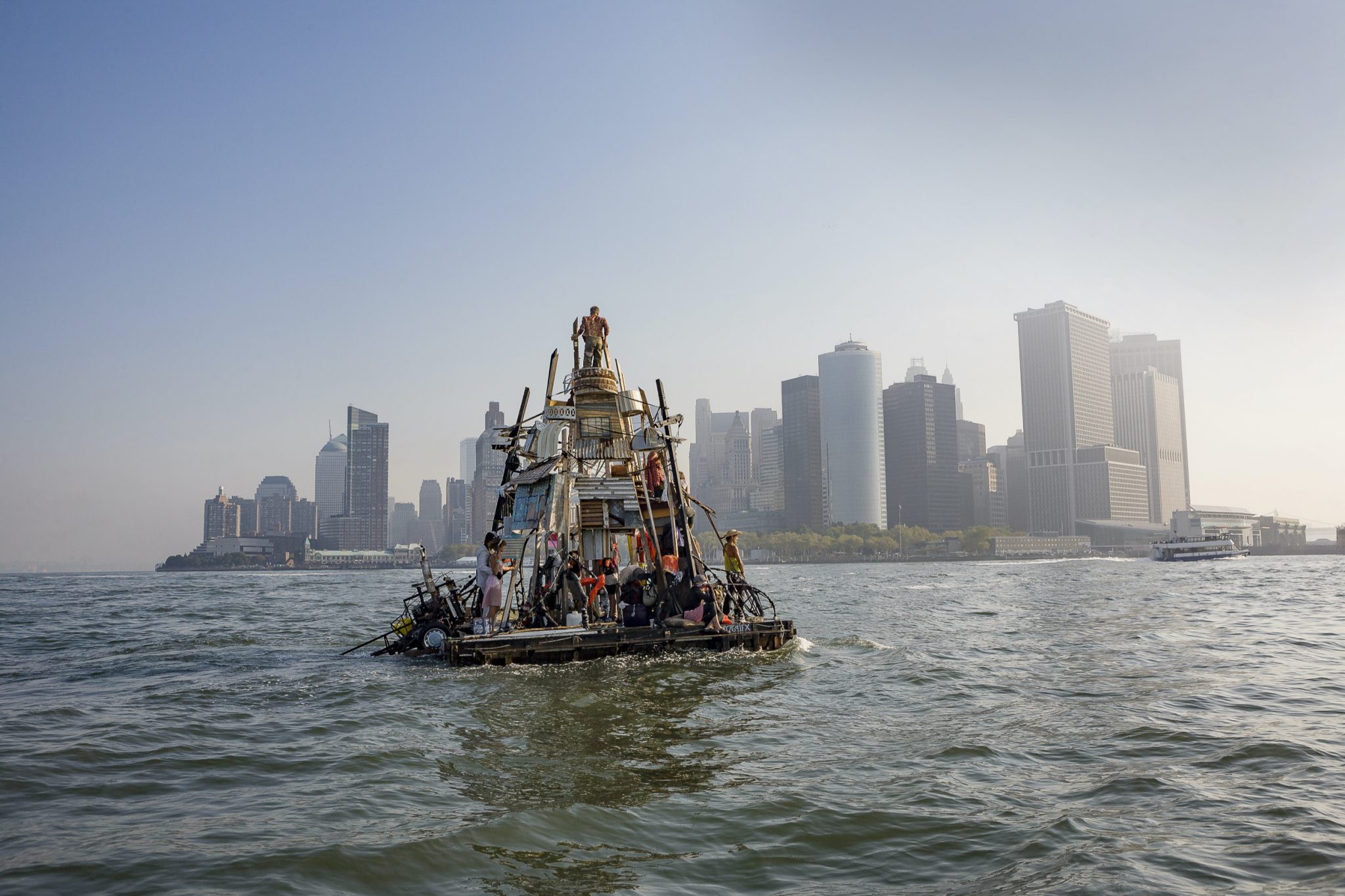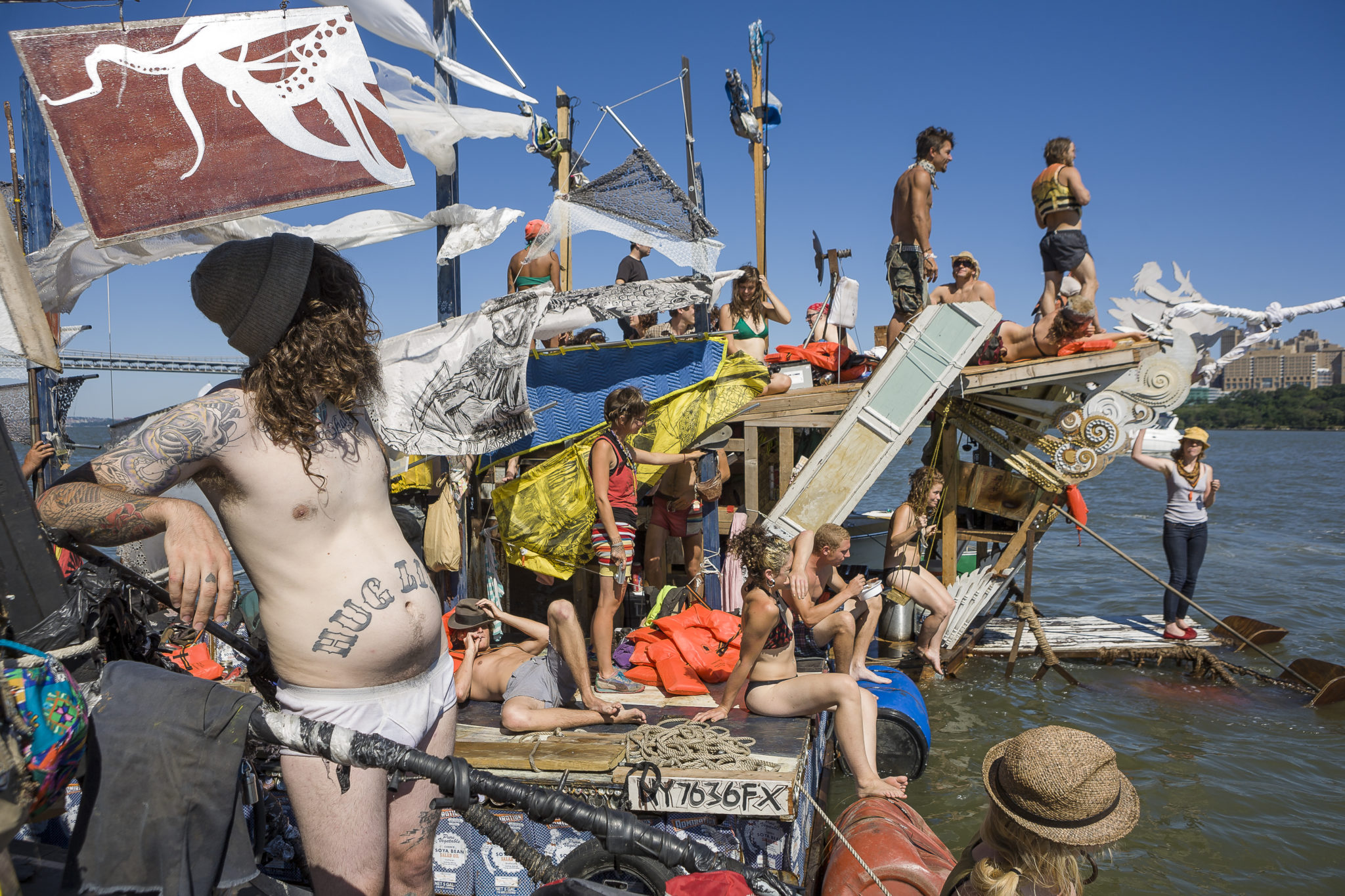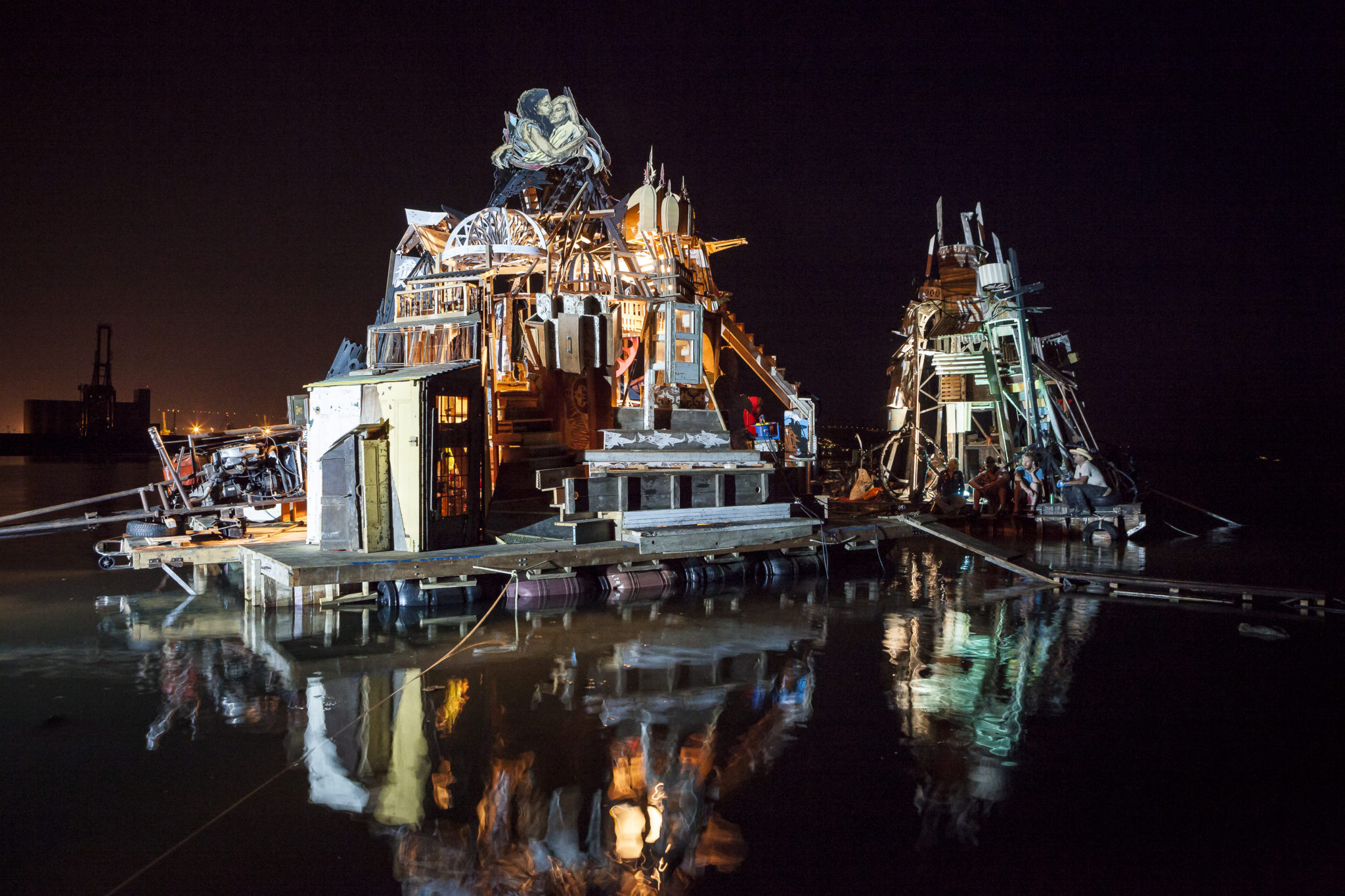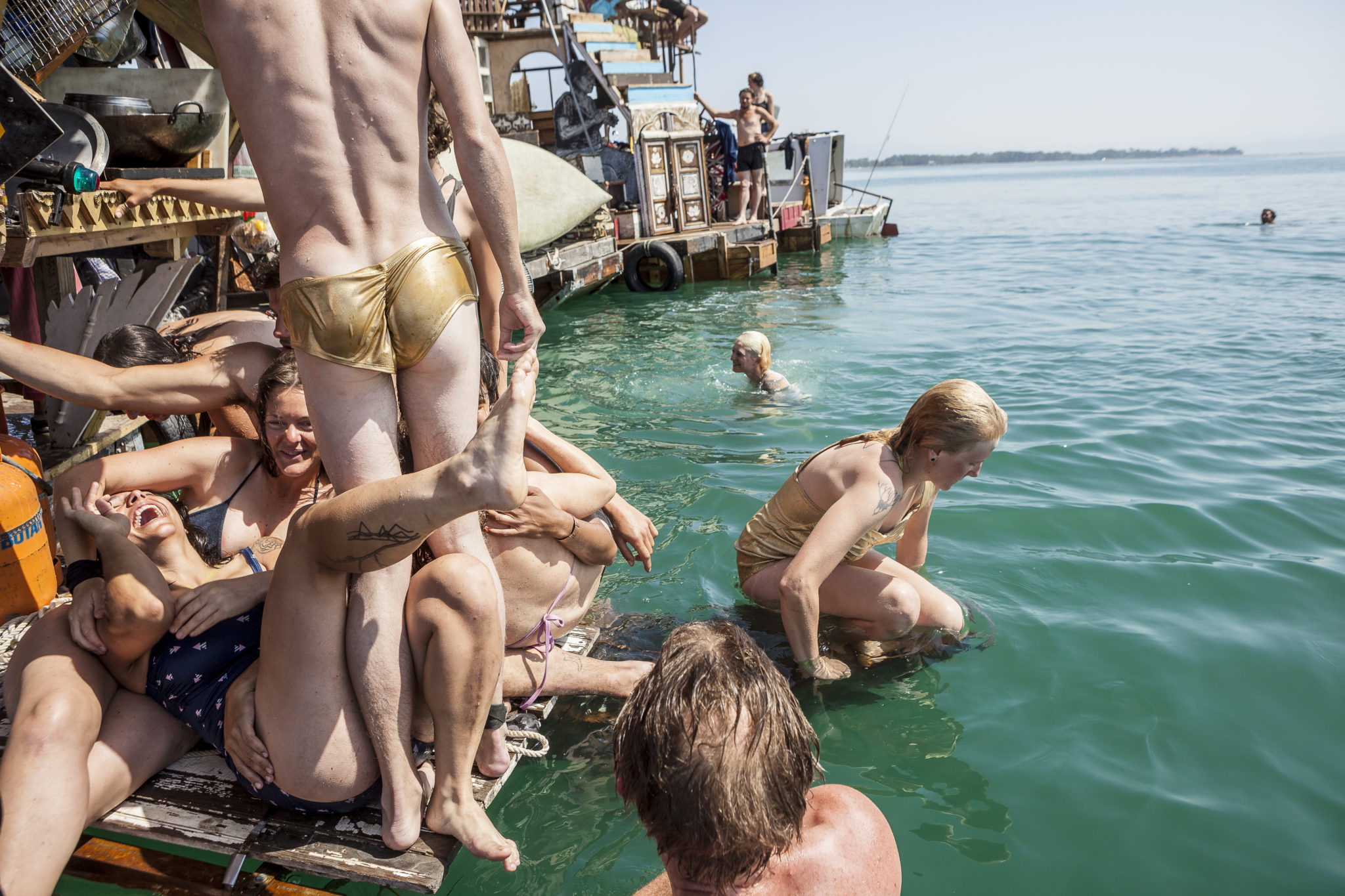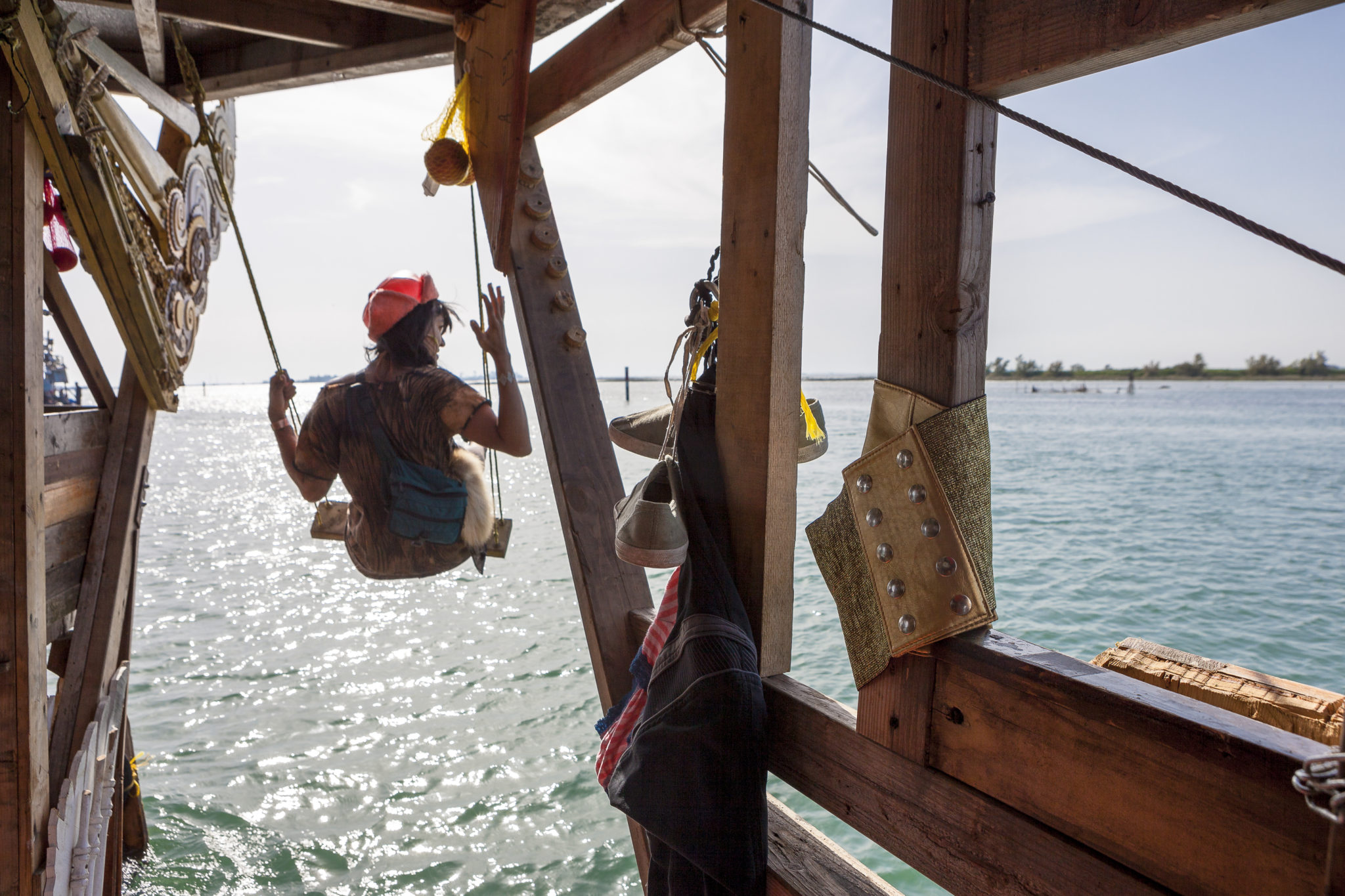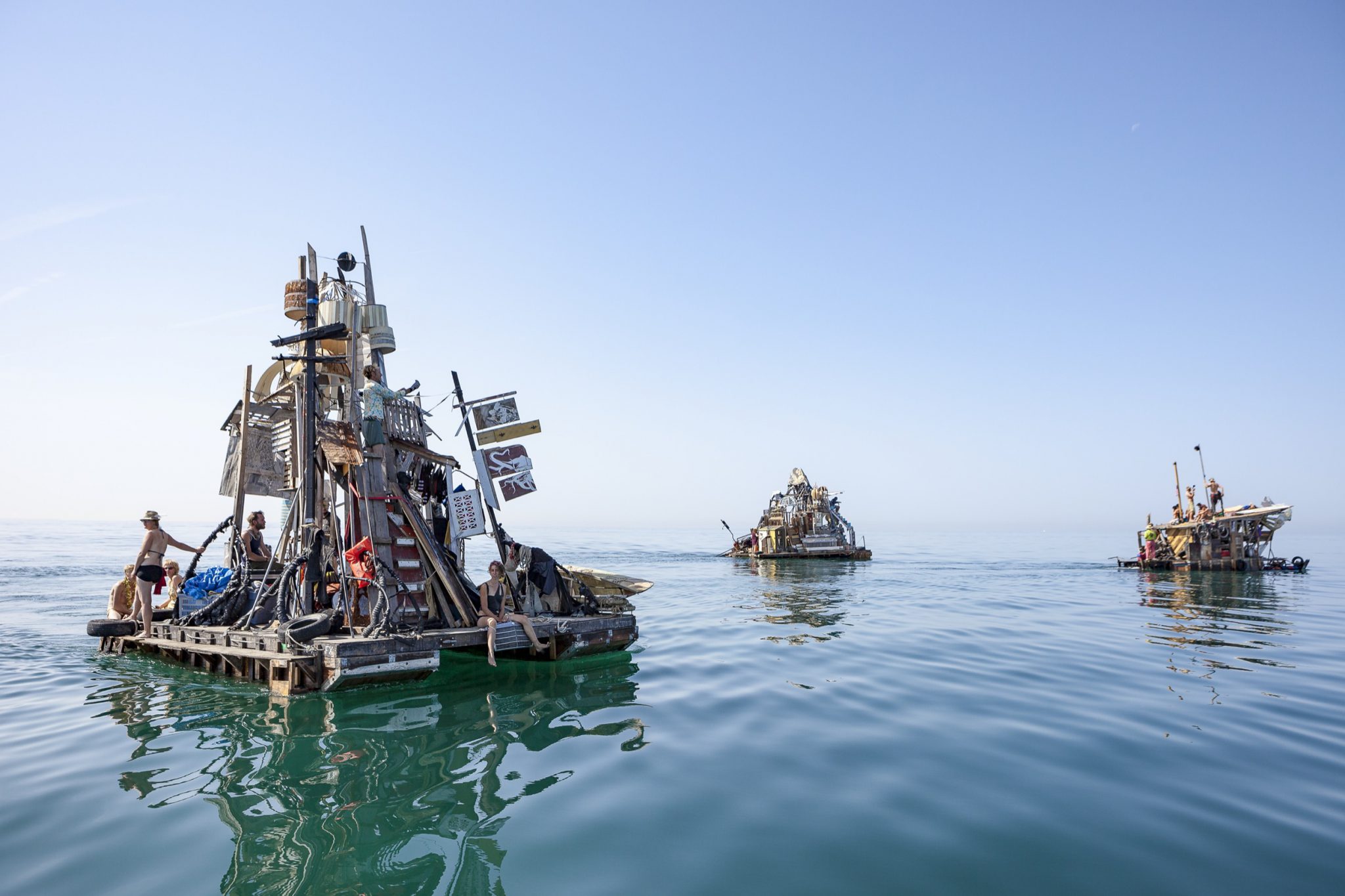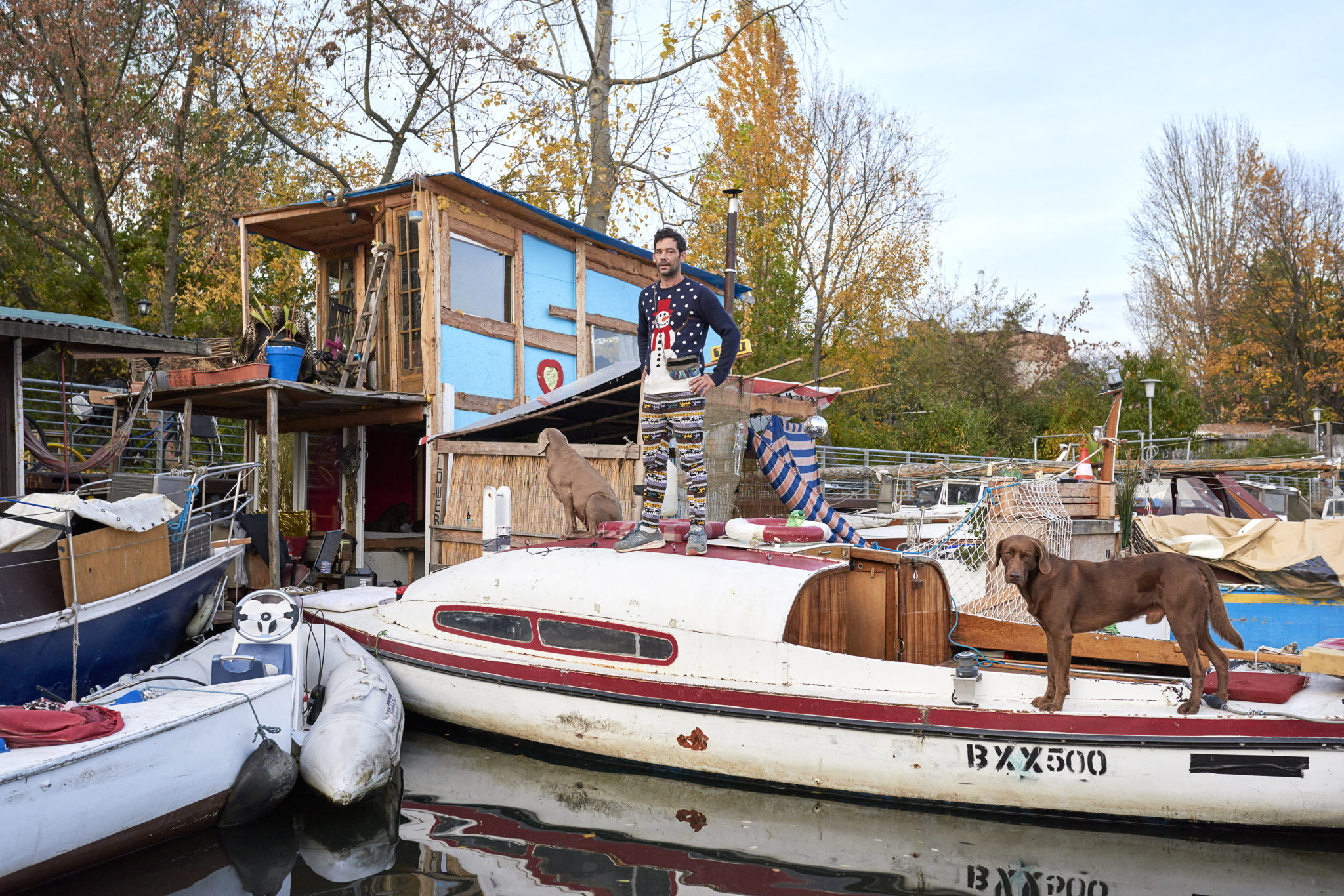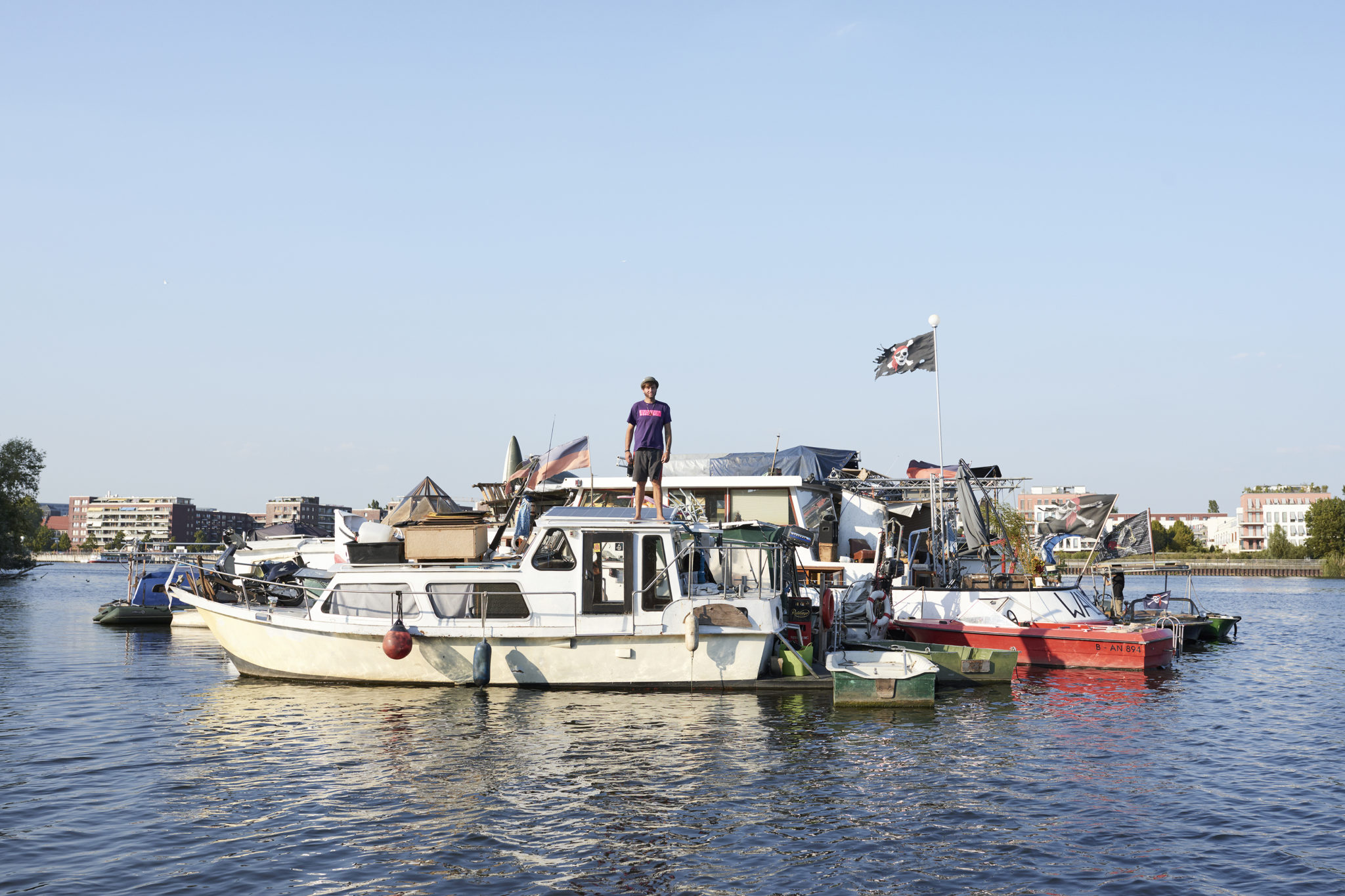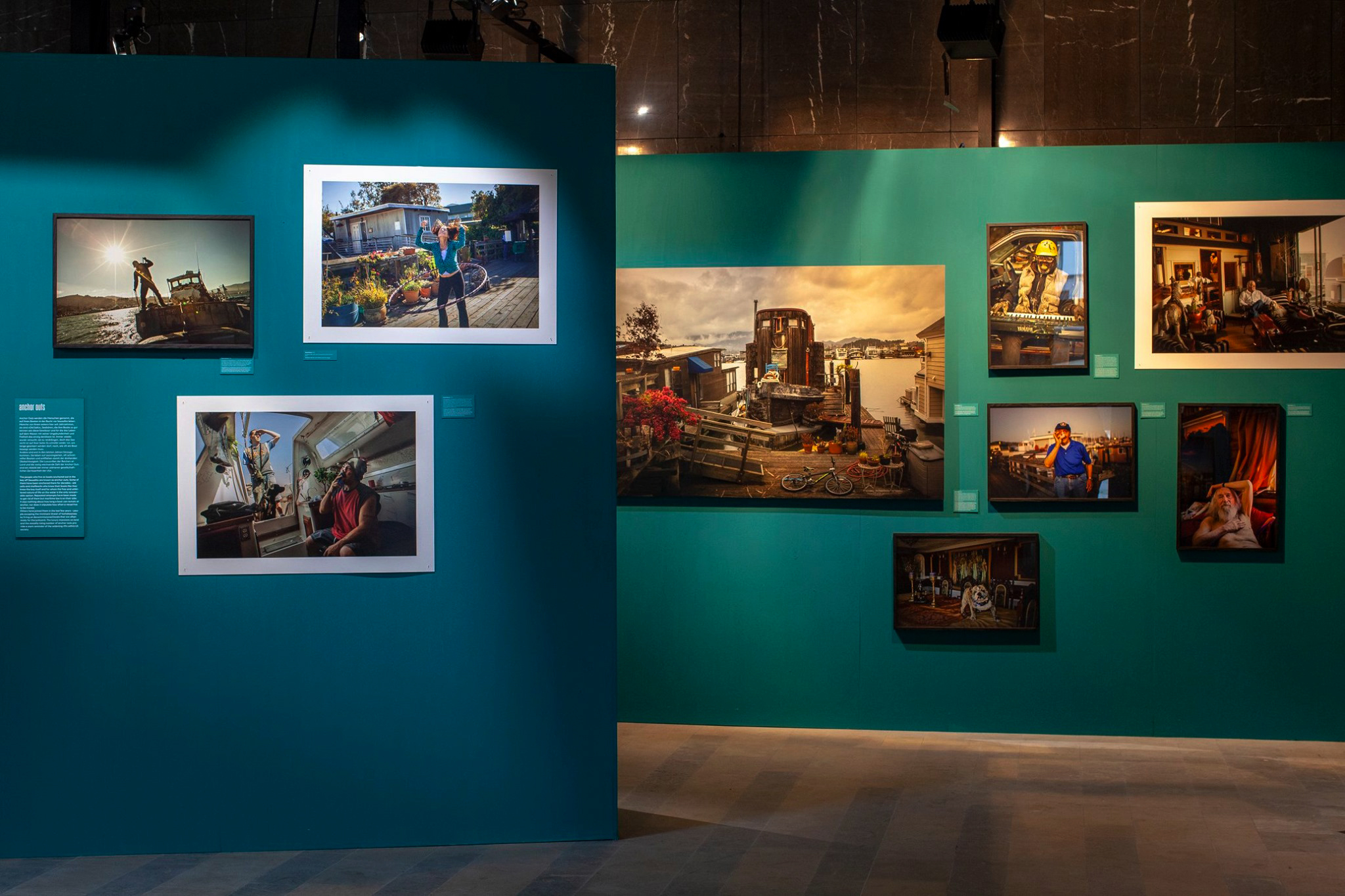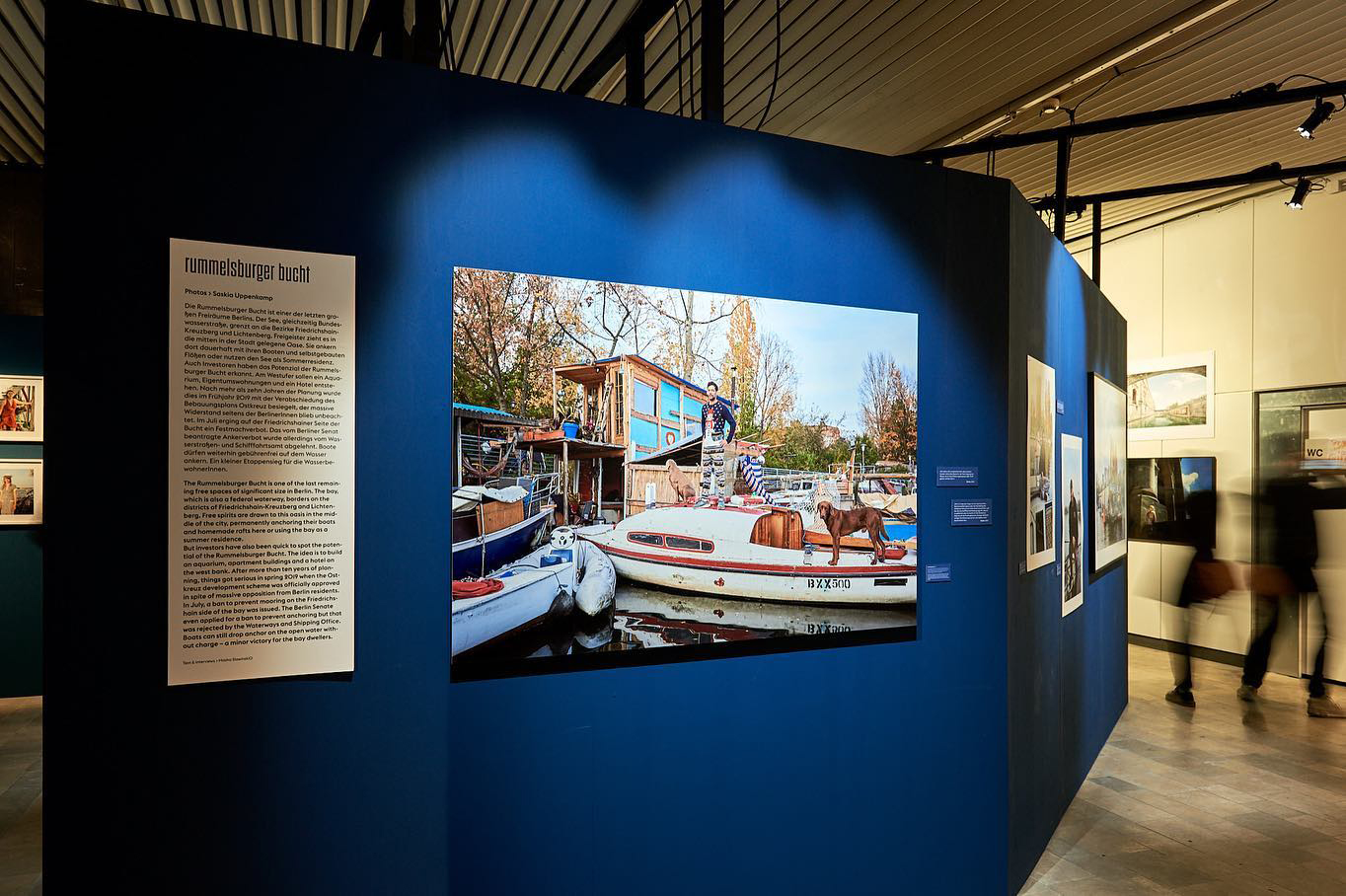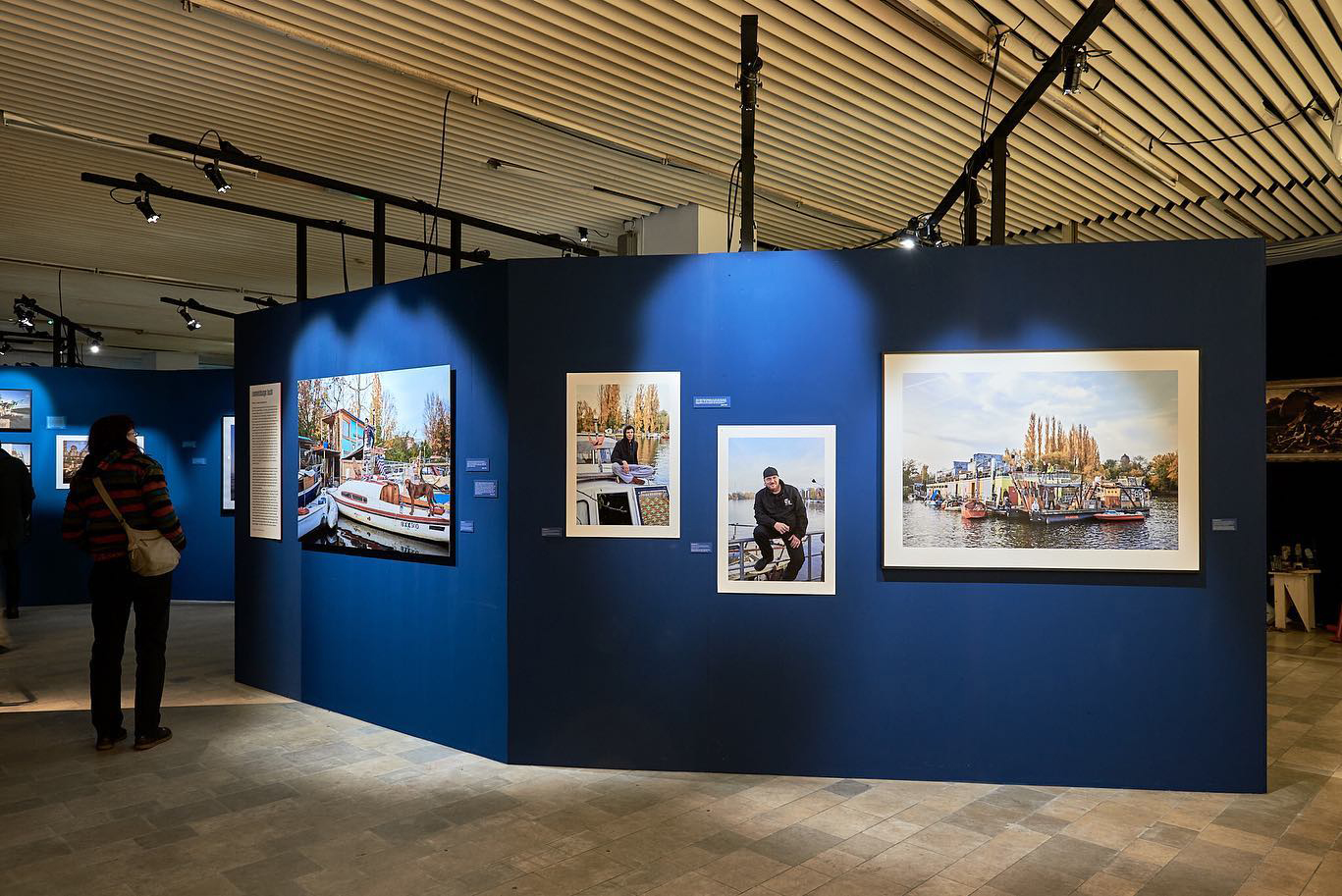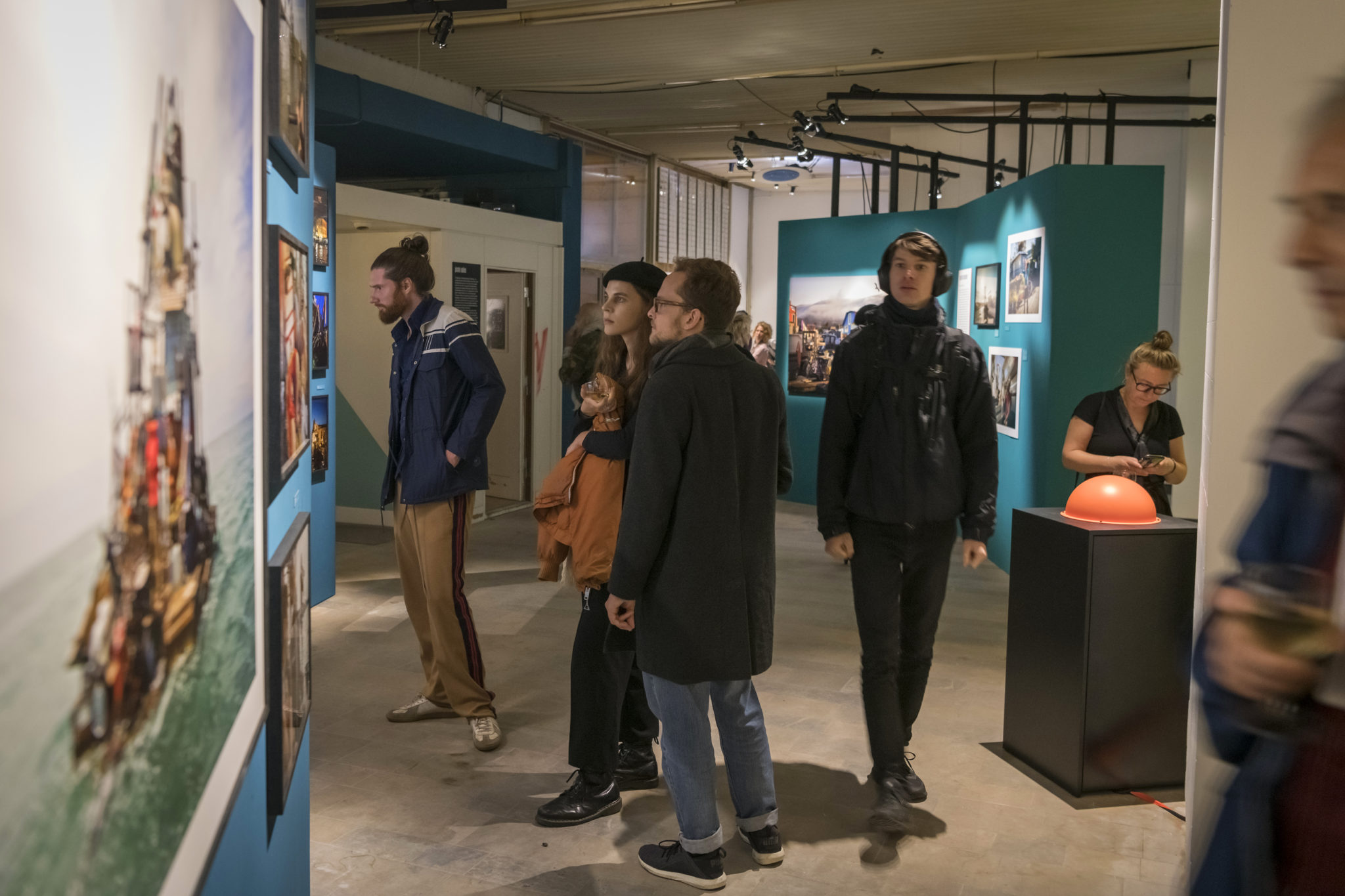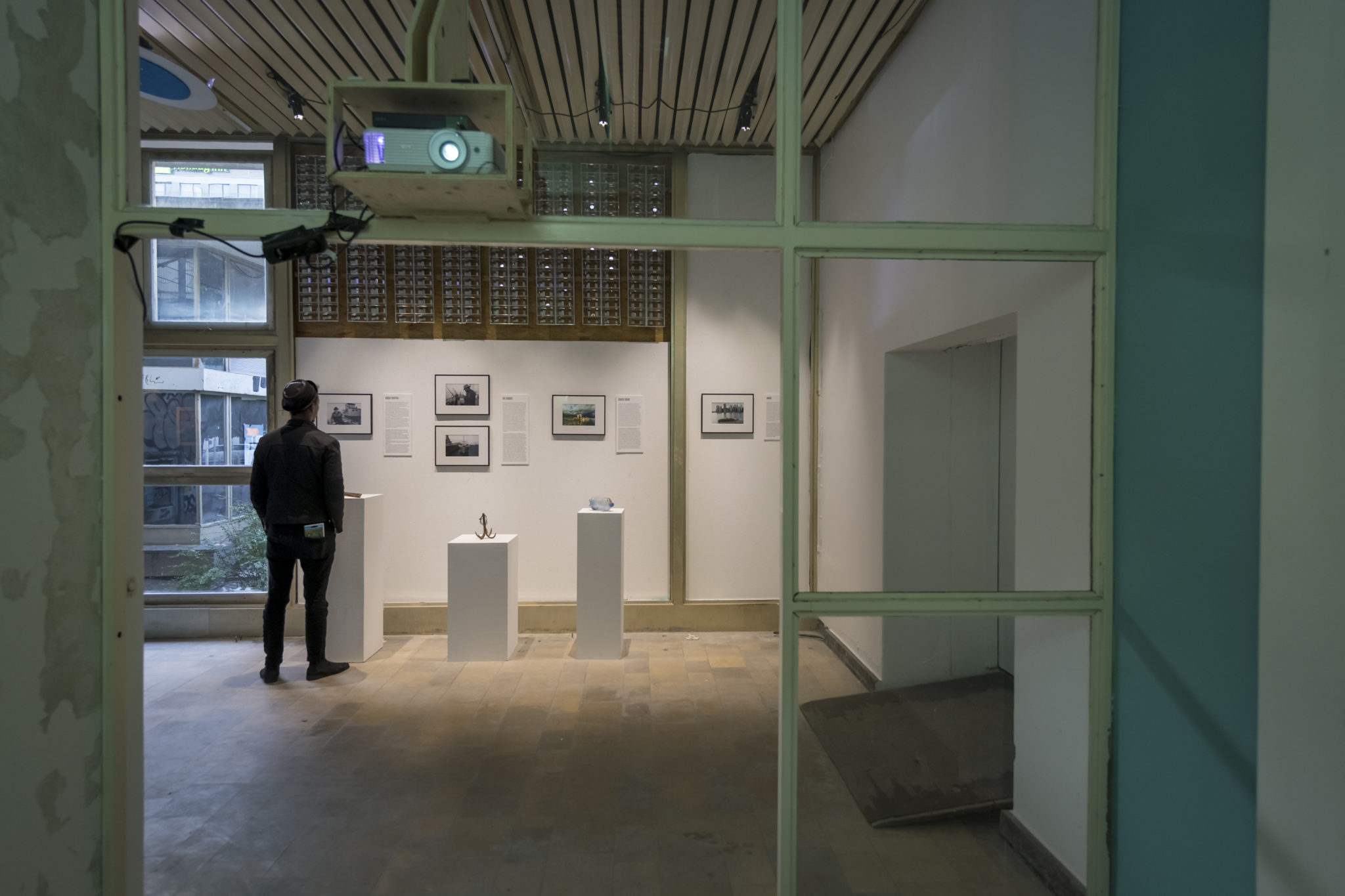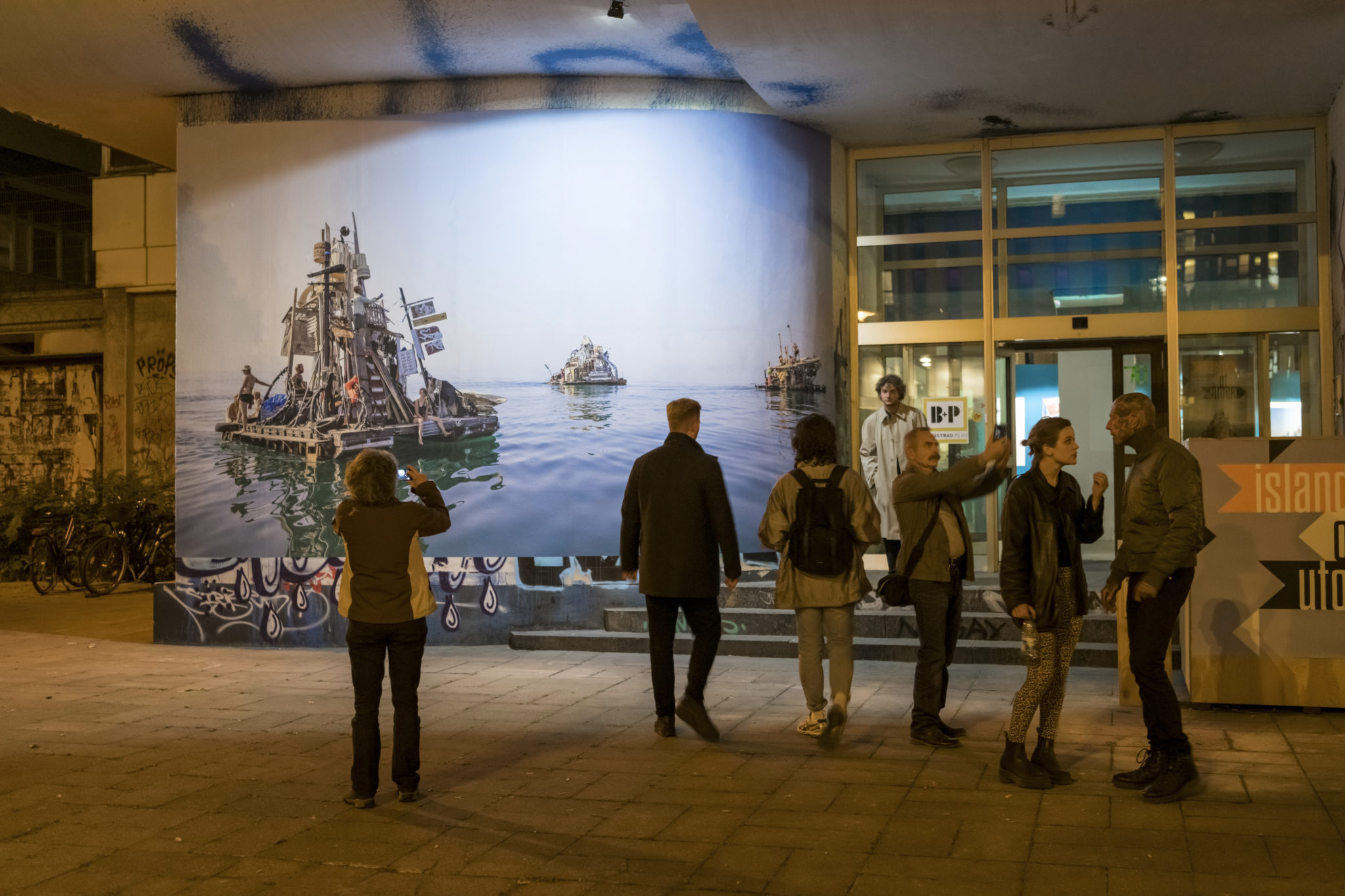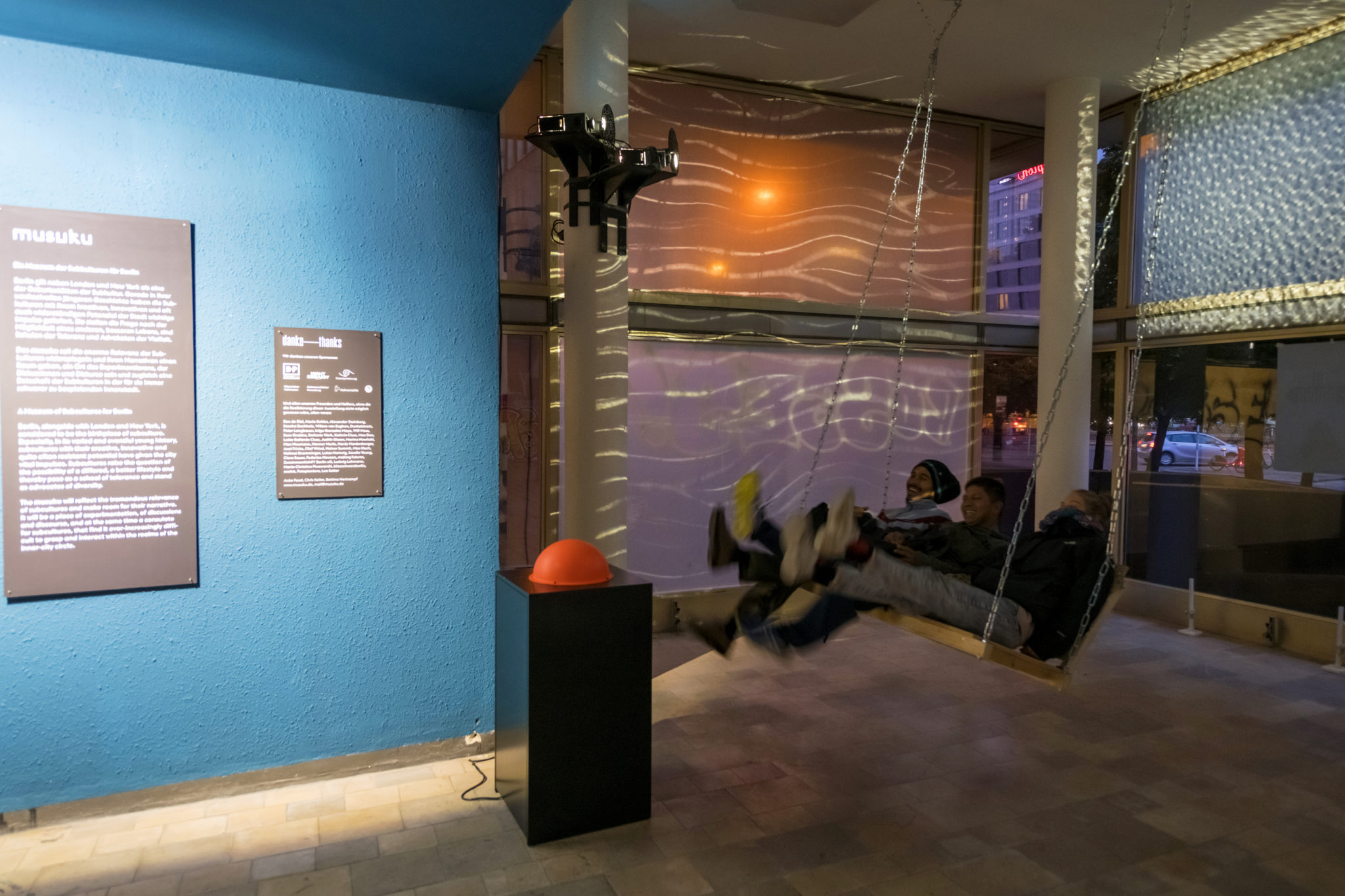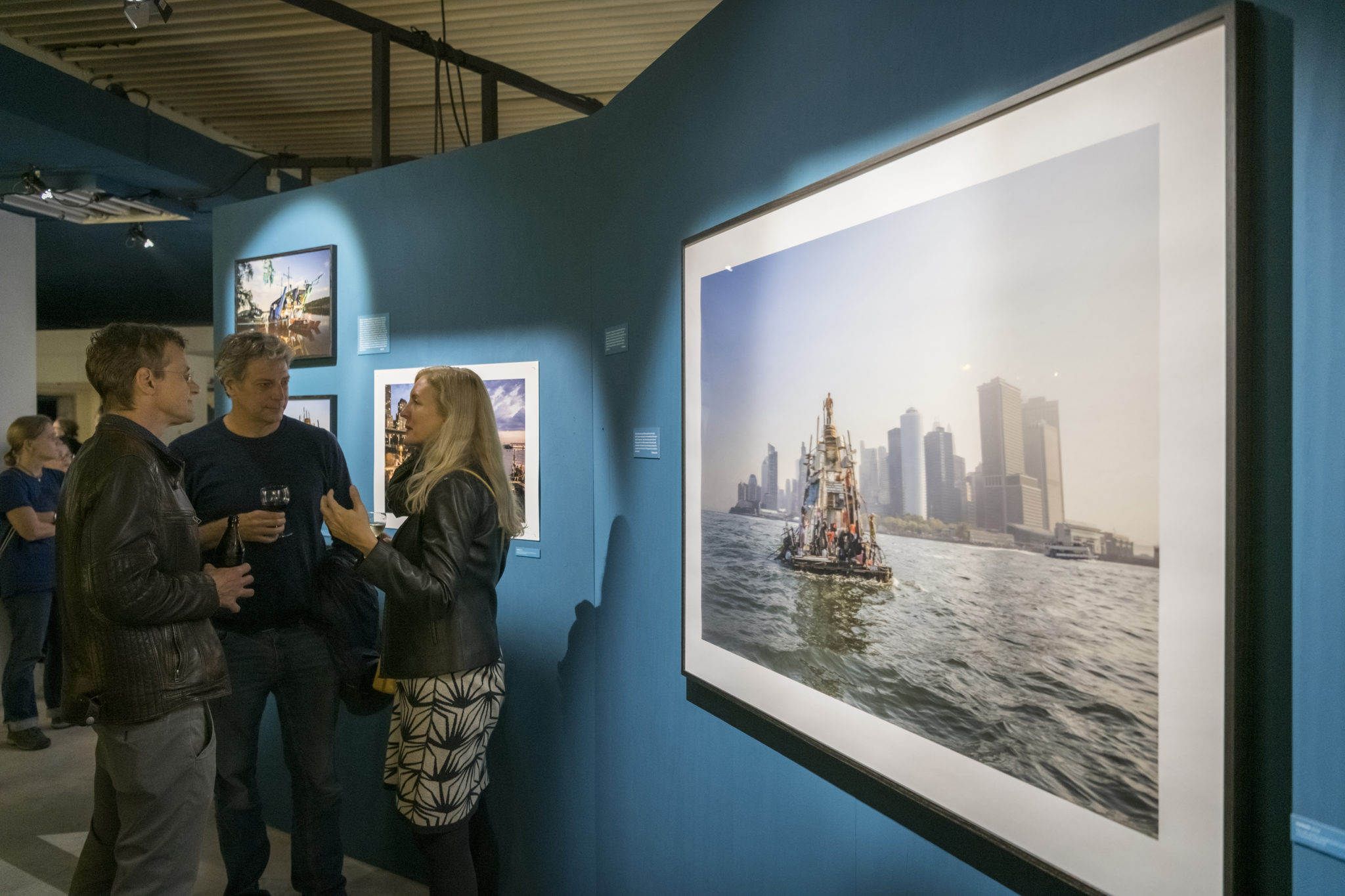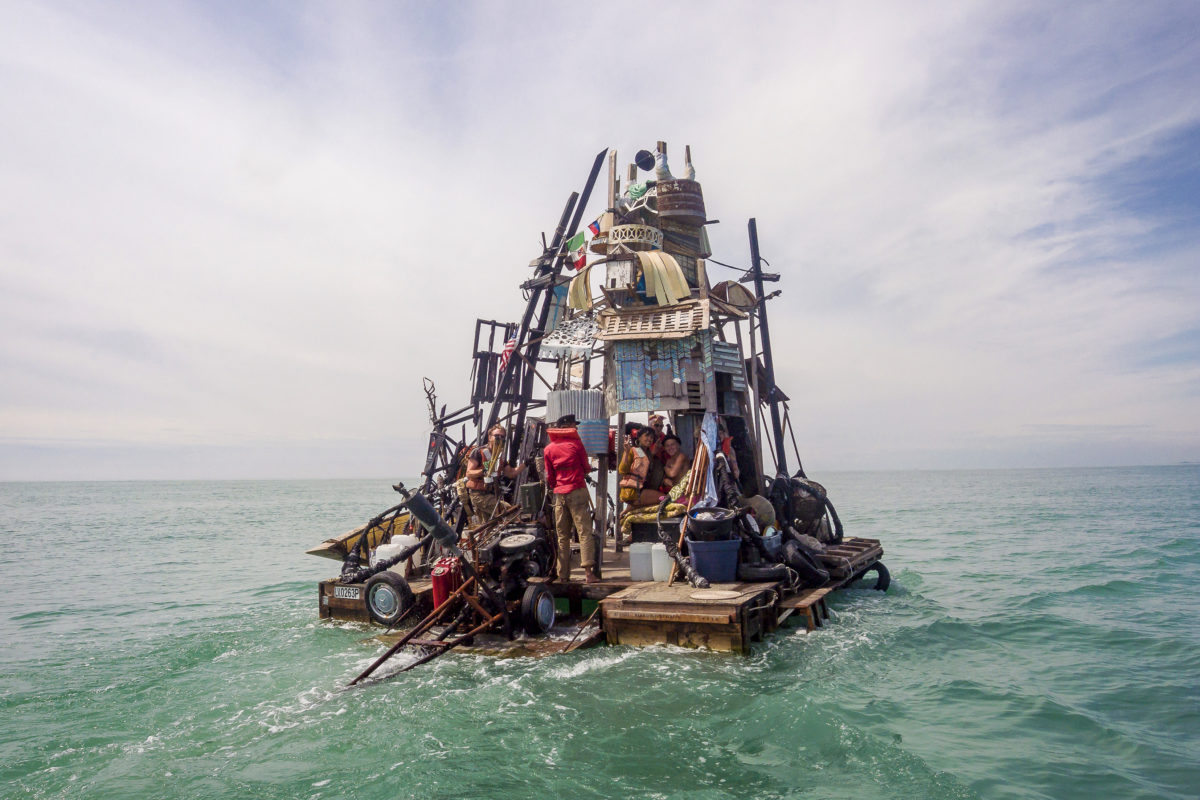
Islands of Utopia
Reclaim the Water!
Free spirits, rebels and artists have time and again taken to the water in search of new possibilities and creative opportunities which either couldn’t be found on dry land or couldn’t be accessed due to property issues or legal restrictions. When faced with changes in living conditions, it is often subcultures and countercultures that venture out in search of new territories and potentials, thereby setting influential and innovative examples.
The increasing lack of room in the city – coupled with rising prices and the disappearance of free spaces – has created an awareness that water bodies can be regarded as public territory too, making them an option for expanding the living environment. Back in 1968, the French sociologist Henri Lefebvre demanded the »right to the city« in his eponymously titled book. But the mission has now extended to »reclaim the water«.
Swimming Cities – Photos by Tod Seelie
The Swimming Cities of Switchback Sea are wondrous-looking sculptural rafts that were assembled by the artist Swoon with the help of almost 70 collaborators. Built largely from material left over from the last construction boom in Manhattan, they are not just works of art but also temporary living spaces for the people involved. In 2008, the Swimming Cities floated down the Hudson River from Troy New York and passed Manhattan before docking in Long Island City.
In Slovenia in 2009, the crew reconstructed two of the rafts from that voyage and built a third vessel from salvaged material in order to float across the Adriatic Sea from the Slovenian town of Koper to Venice where they jumped aboard the Biennale. The final outing of the Swimming Cities of Serenissima was a night-time trip along Venice’s Canal Grande in defiance of several bans, while the sound of a band playing live aboard one of the rafts echoed from the city’s ancient walls.
Sausalito Houseboats – Photos by Nicole Strasser
Sausalito is a former fishing village on the northern shores of San Francisco Bay. Its local houseboat community dates back to the 1950s. The fantastical and often improvised dwellings were inhabited by artists, musicians, writers and other mavericks. Their life on the water was inexpensive and free – until the early 1970s when plans for a construction project required the houseboats to leave. What happened next went down in local history as the Houseboat Wars. Although the conflict lasted for years, the houseboat dwellers resisted being evicted from the bay. The artists of the early years have since been joined by doctors, pilots and business executives. But the community still works. There is a respectful and supportive attitude. People look out for each other. Further out in the bay are the »anchor-outs«. Their numbers are steadily growing as more and more people can no longer afford to pay the rent in one of California’s most expensive areas.
Rummelsburger Bucht – Photos by Saskia Uppenkamp
The Rummelsburger Bucht is one of the last remaining free spaces of significant size in Berlin. The bay, which is also a federal waterway, borders on the districts of Friedrichshain-Kreuzberg and Lichtenberg. Free spirits are drawn to this oasis in the middle of the city, permanently anchoring their boats and homemade rafts here or using the bay as a summer residence.
But investors have also been quick to spot the potential of the Rummelsburger Bucht. The idea is to build an aquarium, apartment buildings and a hotel on the west bank. After more than ten years of planning, things got serious in spring 2019 when the Ostkreuz development scheme was officially approved in spite of massive opposition from Berlin residents. In July, a ban to prevent mooring on the Friedrichshain side of the bay was issued. The Berlin Senate even applied for a ban to prevent anchoring but that was rejected by the Waterways and Shipping Office. Boats can still drop anchor on the open water without charge – a minor victory for the bay dwellers.
Flussbad Berlin
The main focus of the Flussbad Berlin river swimming project is on the transformation and usage of the Spree canal in the city’s Mitte district. The aim of the project is to clean up the river while also offering people new ways of accessing the water. Between the Humboldt Forum and the Bode Museum, right at the very heart of the capital, the canal will be transformed into a public space. The prospect of clean water should encourage both residents and visitors to take a swim along the banks of the Museum Island. The river water itself will be purified upstream via a natural process and the Spree canal will be converted into an aquatic ecological zone.
Initially dismissed as a charming but unrealistic fantasy, the idea developed by artist and architect siblings Jan and Tim Edler is now one of the hottest projects due to shape urban life in Berlin.
Die Ausstellung zeigt darüber hinaus eine Vielzahl weiterer Themen wie Piratenradios im London der 60er, das Kunstraumschiff MS Stubnitz, Shivering Sands, die künstliche schwimmende Insel Plastic Islands, das Urban Gardening Project »Swale« uva.
Fotografen
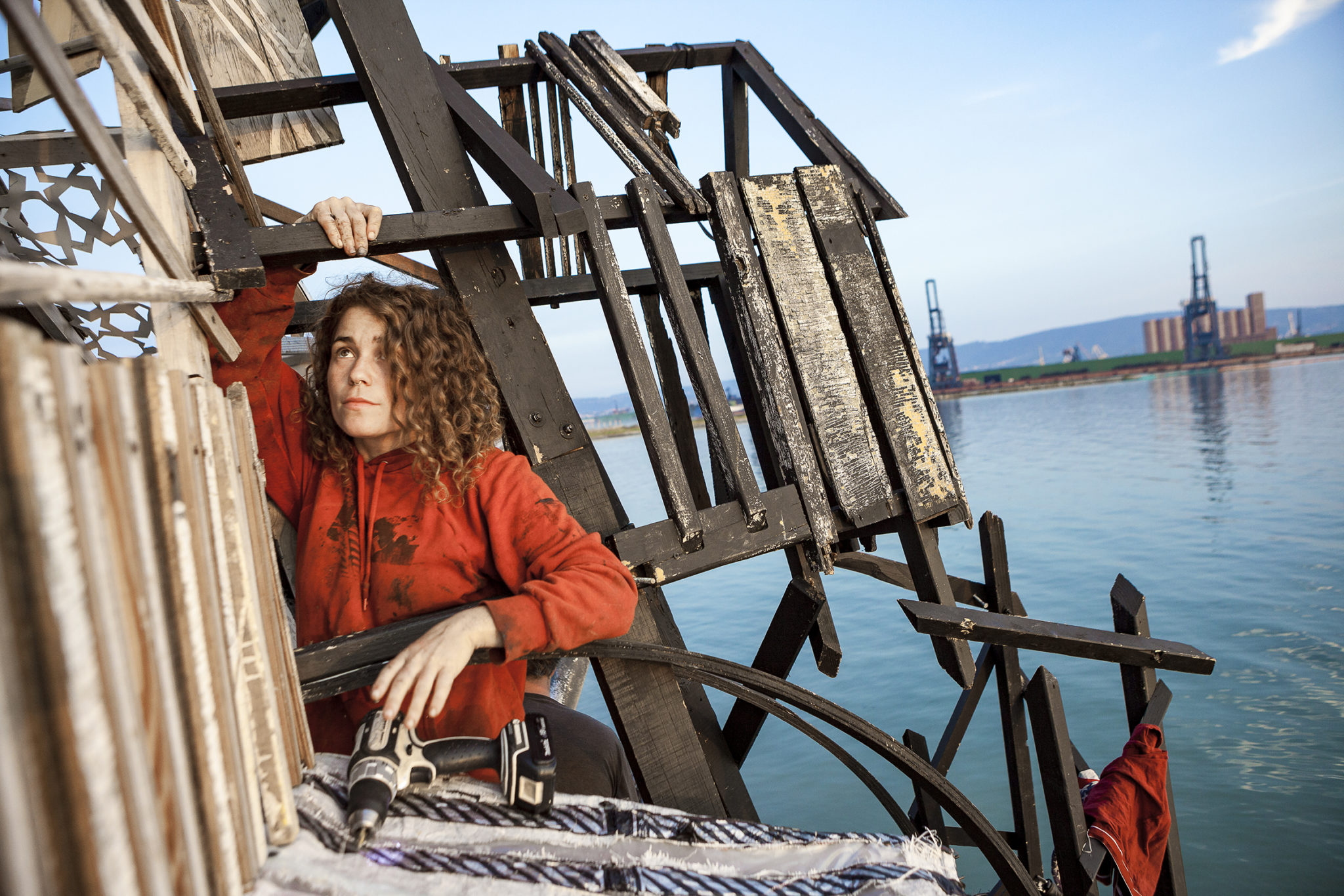
↣ Tod Seelie
is an American photographer who has photographed across the -United States and in twenty-five other countries across the five continents. His work reflects on his own life, which often intersects with what are often called “subcultures.” He has exhibited internationally and published a monograph, BRIGHT NIGHTS, with Prestel Publishing in 2013.
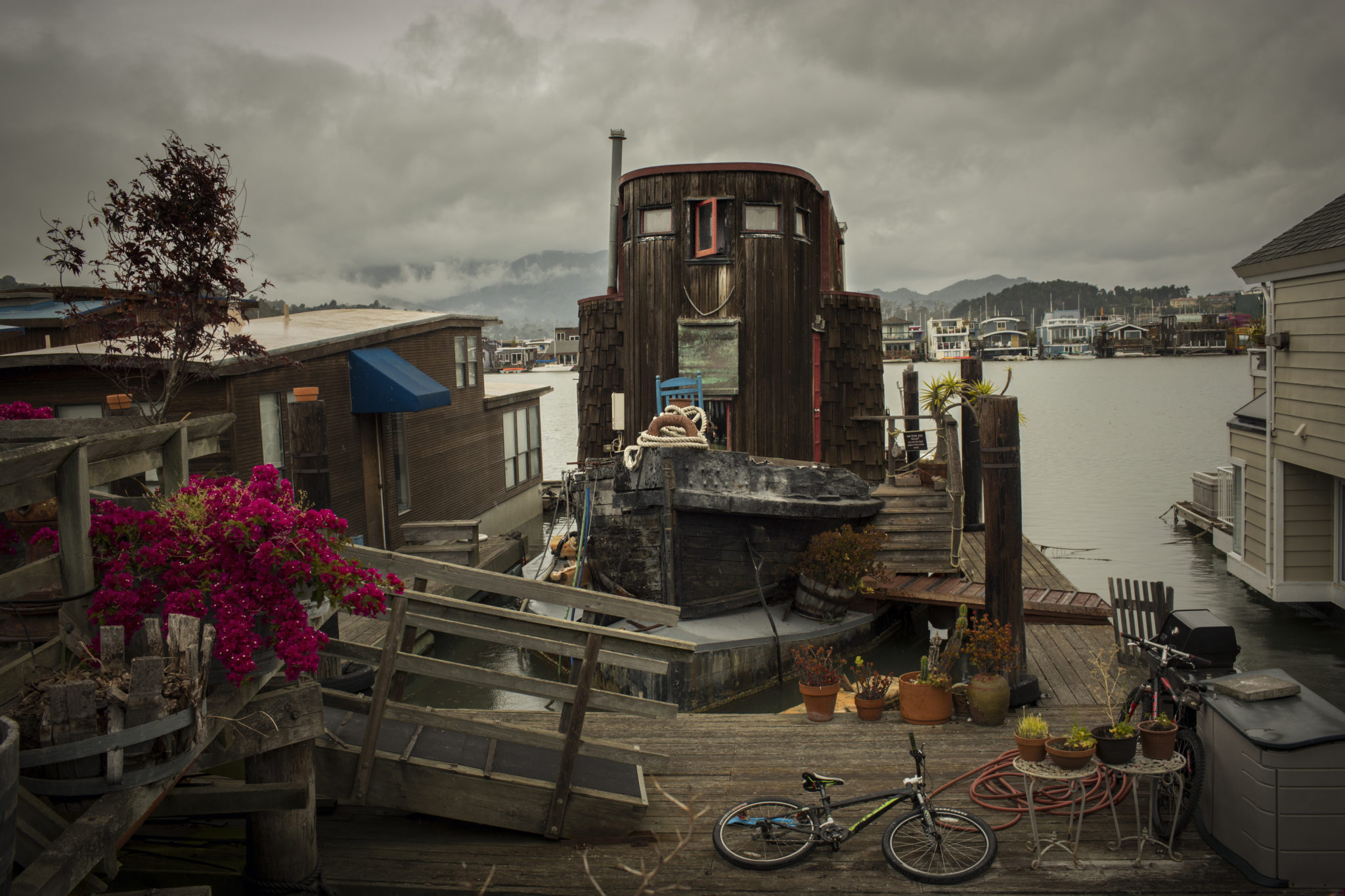
↣ Nicole Strasser
lived on one of the boats at Maindock 4 while working on this photo series. What she found particularly remarkable in this small community was the special cohesion of its residents.
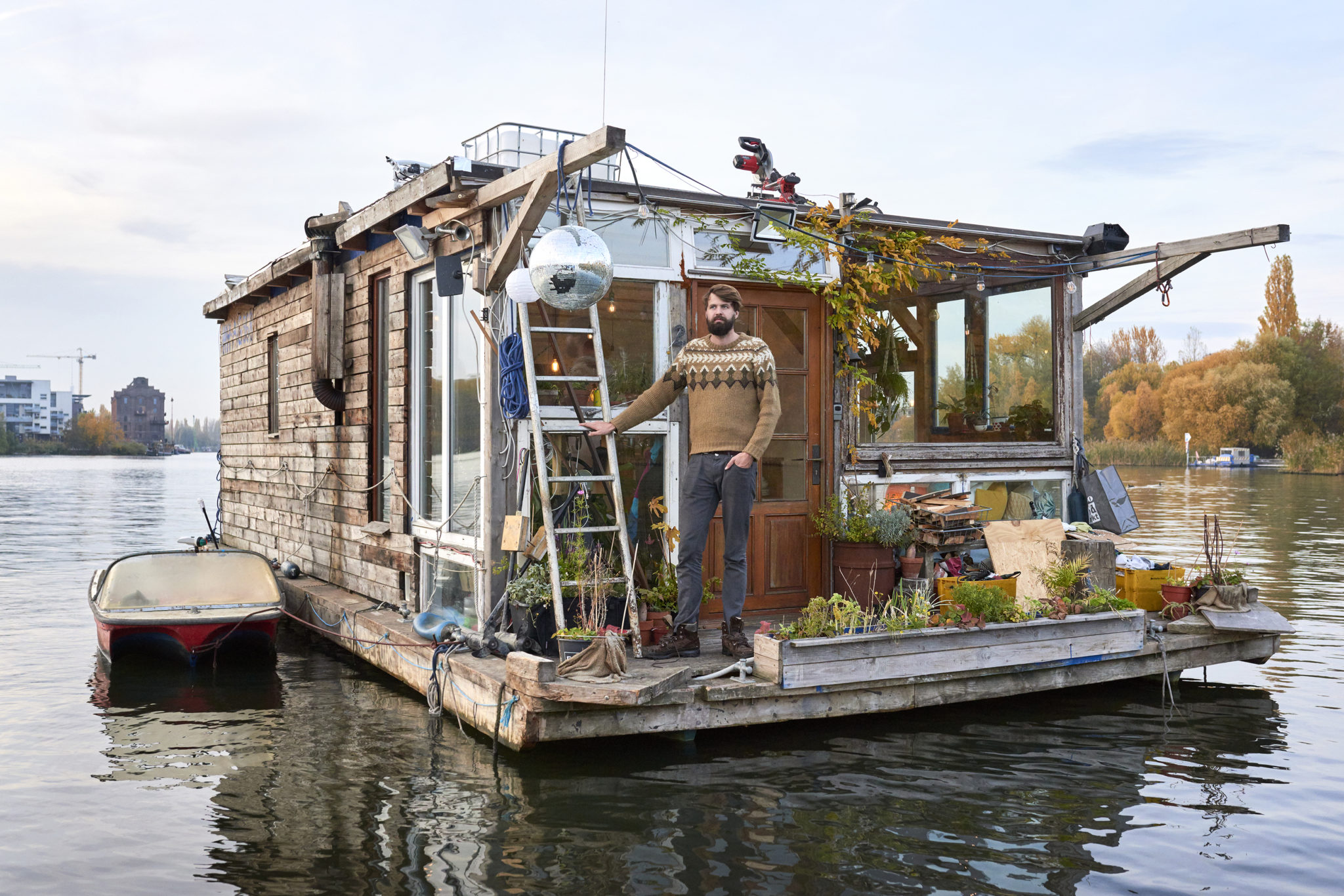
↣ Saskia Uppenkamp
has specialized as a photographer in portraits and reportages. At the same time, the route “Rummelsburger Bucht” bears witness to the struggle for one of Berlin’s last great open spaces.
Projects Berlin
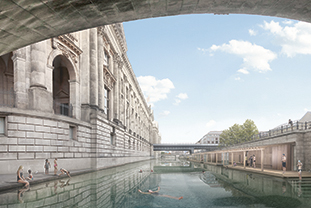
↣ Flussbad Berlin
Swimming in front of a historic backdrop in the middle of Berlin – this could soon be a reality thanks to this initiative. You can get involved in the realization of this idea in many ways.
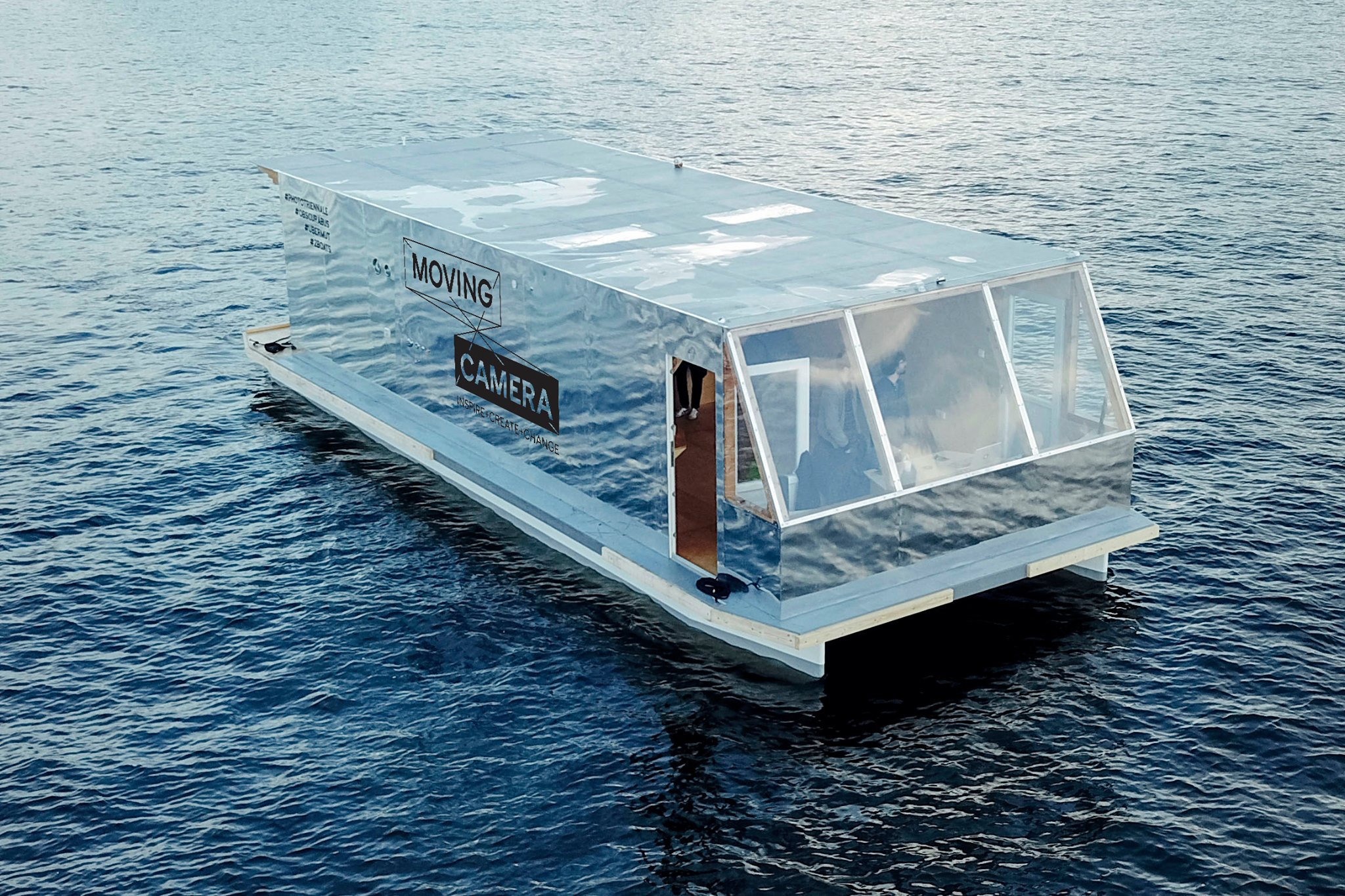
↣ Moving Camera
is a non-profit organization that teaches children creativity through art and photography. The self-built boat in the form of an oversized pinhole camera serves this purpose.
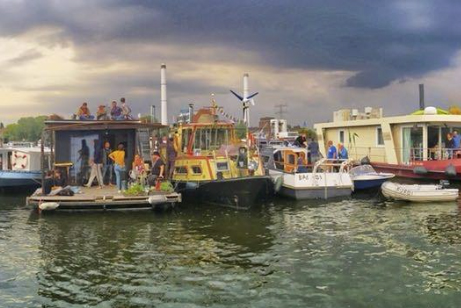
↣ Spree:publik
The Spree:publik sees itself as a support group of initiatives, collectives, associations and other active people who are committed to the democratization of Berlin’s water and riverside areas.
Partners and Cooperations
↣ Haus der Statistik
The exhibition took place as a pioneer use in the model project House of Statistics at Alexanderplatz Berlin.
↣ Partner und Sponsoren
The exhibition was realized with the active support of our partners and sponsors.
